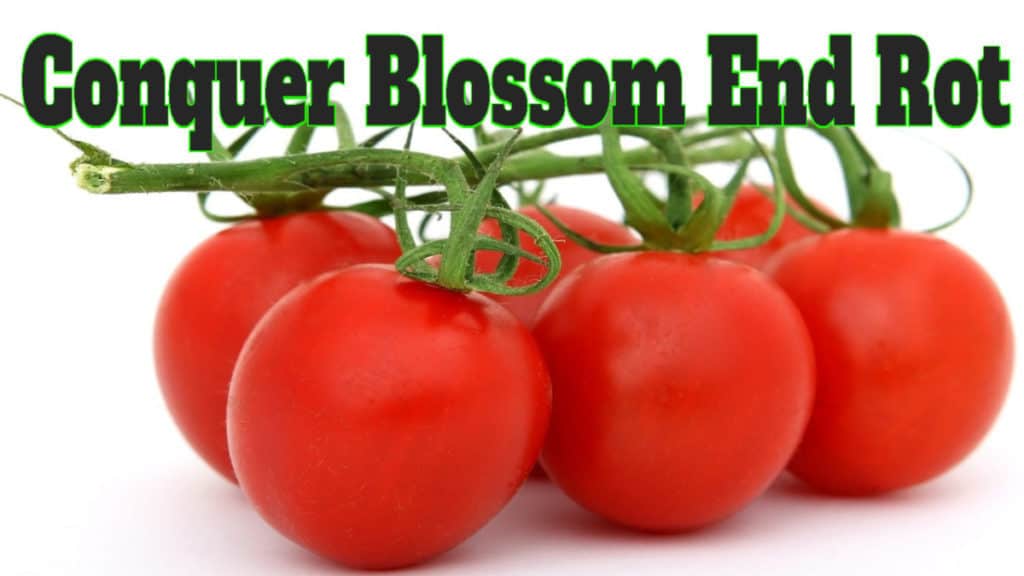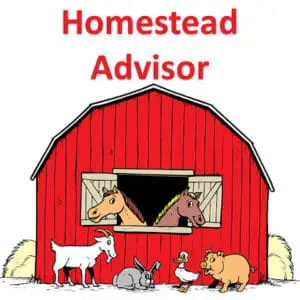
You walk out to the garden to pick a tomato only to find that the bottom of that beautiful tomato is rotten. What is it? It is probably Blossom End Rot. But don’t despair, there are several simple methods you can employ to help your tomatoes produce perfect fruit every time.
Blossom End Rot is caused by a lack of calcium. This happens when the plant is not able to take in enough calcium for the fruit to form correctly. In most cases, Blossom End Rot can be prevented by adequate and uniform amounts of water, and by correcting the pH of the soil. Sometimes a calcium spray solution will also aid in its defeat.
Blossom End Rot can plague even the most experienced gardeners, but a few common-sense practices can all but eliminate it. Let’s explorer what you can do to make sure all your tomatoes are perfect!
First of all, Blossom End Rot (BER) is not a viral or fungal problem, so fungicides and insecticides are ineffective. It can also be found in other garden vegetables such as peppers, eggplants, and squash.
As stated before, BER is caused by inadequate calcium in the fruit when it is formed. That may or may not be because the soil is calcium deficient. Sometimes, the calcium levels in the soil are just fine but the plant is unable to deliver it to the individual fruits.
That can be caused by root damage, waterlogged soil, pH levels in the soil, or the lack of a uniform watering schedule. In those instances, calcium could be readily available in the soil, but the plant is unable to pull it up and supply it as needed.
Tomatoes grow best when the pH level is around 6.5 to 6.8. That is the optimum pH that will allow the plant to utilize available nutrients. A soil test (before the gardening season) is advised to make sure your soil has the correct pH.
If the pH level is not where you want it to be, consider amending the soil with Garden Lime to get the pH at the optimum level. Garden lime can be found at any gardening supply center, or at the big box stores. Here is an example of garden lime at Amazon.
Watering Your Tomatoes
Once the pH in the soil is corrected consider a drip irrigation system. That will allow you to give your plants the correct amount of water in a timely manner. Tomatoes should be watered deeply. It will be much better for the plant if it is watered once a week deeply, than if it was watered shallowly every day.
Tomatoes need about 1 inch to 1 and 1/2 inch of water every week, so take that into consideration when you are planning your watering schedule.
To make sure the plants are watered consistently, I would encourage you to install a drip irrigation system and include a timer that will water your garden even if you are away for a few days. Irrigation systems are easy to install and are quite inexpensive. Here is an informative article about the various irrigation systems that can be used.
As mentioned before, water is one of the keys to eliminating blossom end rot. Calcium is moved through the plant via water, so a consistent watering regimen is key. Too much water and too little can adversely affect the plant’s ability to deliver calcium (and other nutrients) through the plant.
Watering overhead is an effective way to irrigate the garden. However, overhead watering can encourage disease. Water that is splashed on the lower leaves by rainfall or sprinklers can bring fungus growth as well as other diseases that plague tomatoes. For that reason, it’s much better to use an irrigation system that waters at or below the soil level.
Fertilization Is A Factor
Rapid early growth in tomatoes can instigate blossom end rot. It is best to start off by using smaller amounts of Nitrogen. A fertilizer, such as 10-20-10 will give the plants all the nitrogen they need without adding to the BER problem. Since tomatoes need the middle number more (phosphorus), having a fertilizer blend with 20% phosphorus will encourage bloom growth and therefore encourage fruit production.
Many people swear by the use of Epsom salt for blossom end rot prevention. Most experts say that is not the case, but I must say, when I use it (Epsom salt) I seem to have less BER. For that reason, I still use it. I put a tablespoon or two in the hole when I am planting the tomato seedling (but don’t tell the experts).
Do Not Disturb
Cultivation near the plant is another contributor to blossom end rot. The reason is this: Tomatoes are fairly shallow rooted and disturbing the roots means that you are disturbing the pipeline the plant uses to uptake water and minerals.
For that reason, be careful when you cultivate around tomato plants. Cultivate very shallow, and with great care. Pull weeds by hand when you feel it’s necessary.
Affected Vegetables
As I said before, other vegetables that are affected by blossom end rot are peppers, eggplant, and even squash. All the preventive measures discussed above should be utilized for these vegetables also.
Although tomatoes seem to be subjected to the worst cases of blossom end rot, these other vegetables can certainly have their fruit affected also and care should be taken to reduce it.
Other Control Methods
Many gardeners swear by a calcium spray. spraying your plants with a calcium solution can be quite beneficial. Here is an example of a calcium spray that targets blossom end rot at Amazon (my affiliate link).
Can I Eat An Affected Tomato?
If you do have a fruit or vegetable affected by blossom end rot that doesn’t necessarily make it an edible. If you wish, you can cut off the affected area and eat the remainder of the fruit. I would not use this in canning or any other preservation method, but eating it fresh should not be a problem if you cut away the bad part.
Mulch Your Plants
Because inadequate or sporadic watering is the main cause of blossom end rot, adding a thick layer of mulch under your plants can be very beneficial. Mulch helps the soil retain water and therefore normalizes the uptake of water into the plant. Any mulch that you choose would probably be all right.
Use Mulch products such as hay, wood chips, bark, or compost. And because mulch is beneficial to your garden in many other ways, you’re getting more than just blossom end rot protection. Again, mulching your garden means you will probably be using less water. Water is expensive. Mulching can save you money and perhaps help prevent blossom-end rot in your vegetables.
My YouTube Channel has over 900 videos dealing with all aspects of gardening, including raising some great tomatoes.

